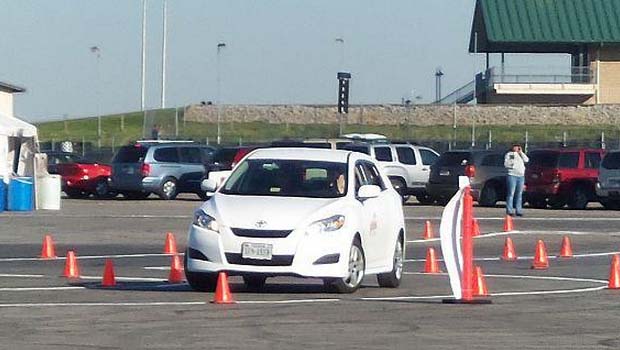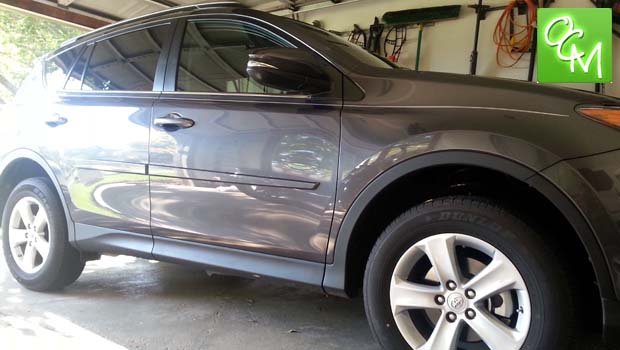The Risks of Driving with ADHD, The dangers of inattentive driving, and managing the risks of distracted driving. Dr. Kat Lewitzke of Bright Pine Behavioral Health offers tips & advice for keeping Teen ADHD drivers safe.
The Risks of Driving with ADHD: What Parents Need to Know
Risks of Driving with ADHD – Written by: Dr Kat Lewitzke PsyD LP
As a psychologist and a parent, I understand how ADHD affects not only schoolwork and social interactions but also more complex tasks like driving. For individuals with ADHD, inattentive driving is a significant concern due to the unique challenges ADHD presents, such as difficulties with focus, impulsivity, and attention to detail. Understanding these risks is crucial not only for ADHD drivers but also for their families and the broader community of road users.
Why? Because driving requires an extremely high level of continuous attention and awareness of the environment. Unfortunately, those with ADHD are more prone to distractions and lapses in focus, which can result in dangerous driving behaviors. In this article, we’ll explore the risks of inattentive driving with ADHD and provide actionable strategies to recognize and manage these challenges.
OAKLAND COUNTY MOMS FAMILY HEALTH & BEHAVIORAL HEALTH ARTICLES

The Risks of Driving with ADHD / The Dangers of Inattentive Driving
Inattentive driving occurs when a driver’s attention is diverted from the primary task of driving, and for individuals with ADHD, this can happen frequently. Here are some of the most common risks associated with inattentive driving:
1 – Missing Traffic Signals and Signs
One of the most significant dangers for ADHD drivers is missing important signals and signs, such as red lights, stop signs, or yield signs. ADHD drivers may become preoccupied with their thoughts, distracted by surroundings, or simply zone out. Failing to notice these critical signals can lead to accidents, particularly at busy intersections where split-second decisions are necessary.
2 – Delayed Braking
Delayed reaction times are another risk for inattentive drivers with ADHD. In situations where quick responses are required—such as when a car in front suddenly stops or a pedestrian steps into the street—ADHD drivers may react too slowly. This delay in braking can result in rear-end collisions or other dangerous incidents.
3 – Swerving or Drifting Between Lanes
ADHD drivers may struggle with maintaining their lane, especially on long, monotonous stretches of road. They might unknowingly drift into another lane or overcompensate by swerving when they realize they’ve veered off course. This can be particularly hazardous on highways, where high speeds leave little room for error.
4 – Failure to Anticipate Hazards
Good drivers are always anticipating potential hazards, whether it’s a car merging into their lane or a pedestrian crossing the street. ADHD drivers, however, may struggle with this forward-thinking approach. They might be so focused on staying in the moment—or distracted by their environment—that they fail to notice upcoming hazards until it’s too late.
5 – Difficulty Navigating Complex Situations
Busy intersections, roundabouts, and highway merges can be especially overwhelming for ADHD drivers. The need to manage multiple pieces of information at once—such as speed, merging cars, and changing lanes—can lead to confusion and increase the risk of accidents.
MORE FROM BRIGHT PINE – HELPING TEENS WITH DEPRESSION
MORE FROM BRIGHT PINE – EARLY SIGNS OF AUTISM OFTEN MISSED BY PEDIATRICIANS
MORE FROM BRIGHT PINE – IS YOUR CHILD MISDIAGNOSED WITH ADHD?
MORE FROM BRIGHT PINE – BACK TO SCHOOL TRANSITION TIPS FOR PARENTS
MORE FROM BRIGHT PINE – THE RISKS OF DRIVING WITH ADHD

The Risks of Driving with ADHD / Recognizing Inattentive Driving Risks
The first step in managing inattentive driving is recognizing when it happens. As both a mental health professional and a mom, I’ve learned that many ADHD drivers may not even realize they’re zoning out or missing important cues on the road. Here are some common signs that inattentive driving might be an issue:
1 – Frequent Close Calls or Minor Accidents
If ADHD drivers are often having near-misses or minor fender benders, it could be a sign that inattentive driving is occurring. These incidents may seem minor, but they can point to underlying attention issues that need to be addressed.
2 – Getting Lost or Missing Exits
Many ADHD drivers find themselves missing exits or taking wrong turns, even on routes they’re familiar with. This can be a sign that their attention is wandering and they’re not fully present in the moment.
3 – Difficulty Remembering the Drive
If ADHD drivers have trouble recalling details of their trip after arriving at their destination—such as what traffic signals they passed or specific turns they made—it could indicate that they’re driving on autopilot and not paying full attention to the road.

The Risks of Driving with ADHD / Managing the Risks of Inattentive Driving
While inattentive driving with ADHD presents serious risks, there are ways to manage these challenges effectively. Here are some strategies that can help ADHD drivers stay more focused and aware behind the wheel:
1 – Mindful Driving Practices
Mindfulness isn’t just for relaxation—it can be an essential tool for ADHD drivers. Practicing mindful driving involves consciously focusing on the task at hand and noticing distractions as they arise without getting pulled into them. Encouraging ADHD drivers to actively remind themselves to stay engaged with their environment, check mirrors, and scan for signals can help reduce zoning out.
2 – Using Driving Breaks
ADHD drivers may find that taking regular breaks during long drives helps them reset and refocus. Even short breaks at rest stops or parking lots can help shake off any inattentiveness that builds up over time.
3 – Technology-Assisted Driving
Many modern vehicles come equipped with features that can help ADHD drivers stay on track. Lane assist systems can gently steer the car back into its lane if it starts to drift, while forward collision warning systems can alert the driver if they’re approaching a vehicle too quickly. These tools can provide an extra layer of security for inattentive moments.
4 – Shortening the Drive
If long drives are especially difficult, ADHD drivers should consider breaking up trips into shorter segments. This might mean planning routes that allow for more frequent breaks or even asking someone else to take the wheel for part of the trip when possible.
5 – Reducing Distractions in the Car
Removing as many distractions as possible from the vehicle is crucial. Encourage ADHD drivers to put their phone on “Do Not Disturb” mode, set up their GPS before hitting the road, and resist the urge to fiddle with the radio or air conditioning controls. The fewer distractions there are, the easier it is to stay focused.
6 – Driving with Accountability
Having a driving partner can be helpful for ADHD drivers. Whether it’s a parent, a friend, or a trusted family member, another set of eyes can provide gentle reminders to stay focused or offer feedback on driving habits. Over time, this kind of accountability can help ADHD drivers become more aware of their inattentive moments and work to improve them.

The Risks of Driving with ADHD / Keeping ADHD Drivers Safe
Inattentive driving is a real risk for individuals with ADHD, but it’s important to remember that these challenges can be managed. By recognizing the signs of inattentive driving and implementing practical strategies, ADHD drivers can take control of their time on the road and minimize the dangers. Whether it’s using mindfulness techniques, taking frequent breaks, or leveraging the latest car technology, ADHD drivers have tools at their disposal to stay focused and safe.
As a mom, I want my children to develop the skills they need to drive confidently and responsibly, regardless of the obstacles ADHD might present. By raising awareness and promoting strategies to reduce inattentive driving, we can help all ADHD drivers—young and old—stay safe on the road while building their independence.
Driving with ADHD presents unique risks, particularly when it comes to inattentiveness. But with the right strategies, these risks can be managed effectively. Understanding the dangers of missed signals, delayed reactions, and zoning out is the first step. By recognizing when inattentive driving happens and taking proactive steps to prevent it, ADHD drivers can navigate the roads with greater safety and awareness, ensuring a safer experience for everyone.

ABOUT Bright Pine Behavioral Health Clarkston
Bright Pine Behavioral Health is a private mental health practice located in Oakland County at 3 locations – Clarkston, Troy, and West Bloomfield. They provide comprehensive standardized neuropsychological assessment and therapy services for the treatment of behavioral problems, mood, anxiety, and neurodevelopmental conditions. Bright Pine Behavioral Health Clarkston works with children, teens, and adults.
Bright Pine Behavioral Health Clarkston
6060 Dixie Highway, Suite H
Clarkston, MI 48346
248-455-6619
www.brightpinepsychology.com

For more The Risks of Driving with ADHD tips, contact at www.brightpinepsychology.com

